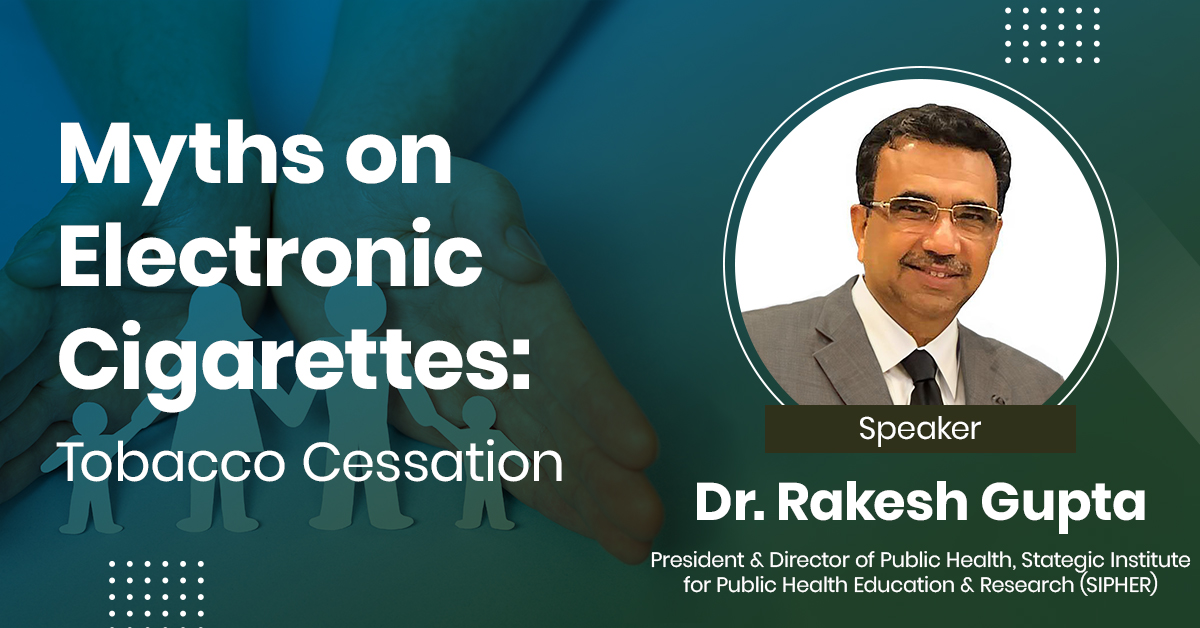- 115.6k views
Myths on Electronic Cigarettes: Tobacco Cessation
Myths surrounding electronic cigarettes (e-cigarettes) and their role in tobacco cessation can mislead individuals attempting to quit smoking. One common myth is that e-cigarettes produce harmless water vapor. In reality, they emit aerosols containing harmful chemicals and fine particles. E-cigarettes are not entirely safe. While they may be less harmful than traditional cigarettes, they are not risk-free. Some believe that e-cigarettes are as effective as FDA-approved smoking cessation aids like nicotine replacement therapy or prescription medications. Research suggests mixed outcomes. Concerns persist that e-cigarettes may serve as a gateway to traditional smoking, particularly among youth. Not all e-cigarettes are nicotine-free. Many contain nicotine, which is highly addictive. E-cigarettes may aid in smoking reduction, but evidence on their effectiveness in helping people quit smoking altogether is inconclusive. E-cigarette aerosol is not harmless, and exposure can still pose risks, especially to vulnerable populations like children and pregnant women. Using nicotine-containing e-cigarettes can lead to dependence, making it harder to quit nicotine altogether.
About the Speaker

Dr. Rakesh Gupta
PRESIDENT & DIRECTOR OF PUBLIC HEALTH, STRATEGIC INSTITUTE FOR PUBLIC HEALTH EDUCATION & RESEARCH (SIPHER)
Upcoming Case Discussions
Impact of Endometriosis on Fertility
Endometriosis, a condition where endometrial-like tissue grows outside the uterus, can significantly impact fertility. It causes inflammation, scarring, and adhesions that may distort pelvic anatomy, block fallopian tubes, and impair ovarian function. Endometriosis is also linked to hormonal imbalances and poor egg quality, reducing the chances of conception. Symptoms like chronic pelvic pain and painful intercourse further complicate fertility. Diagnosis often requires laparoscopy, while management includes pain relief, hormonal therapy, and assisted reproductive techniques like IVF. Early intervention with medical or surgical treatment can improve reproductive outcomes, but severe cases may necessitate advanced fertility treatments for conception.
Hyperlipidemia: From Diagnosis to Treatment
Hyperlipidemia is a condition characterized by elevated levels of lipids, such as cholesterol and triglycerides, in the blood, which can increase the risk of cardiovascular diseases. Diagnosis typically involves blood tests measuring lipid profiles, while treatment focuses on lifestyle changes, such as diet and exercise, alongside medications like statins to manage cholesterol levels and reduce cardiovascular risk. Regular monitoring is essential for effective management and prevention of complications.
Acne: Disorders and Treatment Approaches
Acne is a common dermatological condition caused by clogged pores, excess sebum production, bacterial growth, and inflammation. It can manifest as blackheads, whiteheads, papules, pustules, or cysts, often leading to scarring if untreated. Various factors, including hormonal changes, diet, stress, and genetics, influence its severity. Treatment approaches range from topical and oral medications, such as retinoids, antibiotics, and hormonal therapy, to advanced procedures like chemical peels and laser therapy. A personalized skincare regimen, along with lifestyle modifications, plays a crucial role in managing and preventing acne.
Lung Ultrasound in Acute Respiratory Failure
Lung ultrasound has emerged as a vital, non-invasive tool in the rapid assessment of acute respiratory failure. It provides real-time imaging to differentiate conditions like pneumonia, pulmonary edema, pneumothorax, and pleural effusion with high accuracy. Compared to traditional chest X-rays, lung ultrasound offers superior sensitivity, especially in critically ill patients where bedside evaluation is crucial. Its ability to guide immediate clinical decisions improves patient outcomes and reduces unnecessary radiation exposure. With standardized protocols like the BLUE (Bedside Lung Ultrasound in Emergency) protocol, it enhances diagnostic efficiency in emergency and ICU settings.
Gallstone Disease & Cholecystitis: When to Operate?
iGallstone disease and cholecystitis are common conditions requiring careful evaluation to determine the need for surgery. Symptomatic gallstones causing recurrent pain, nausea, or complications like cholecystitis often necessitate cholecystectomy. Acute cholecystitis, characterized by inflammation, fever, and right upper quadrant pain, typically requires early surgical intervention to prevent complications like perforation or sepsis. In high-risk patients, conservative management with antibiotics and drainage may be considered. Elective surgery is recommended for asymptomatic patients with high-risk factors, such as large gallstones or gallbladder polyps, to prevent future complications.







